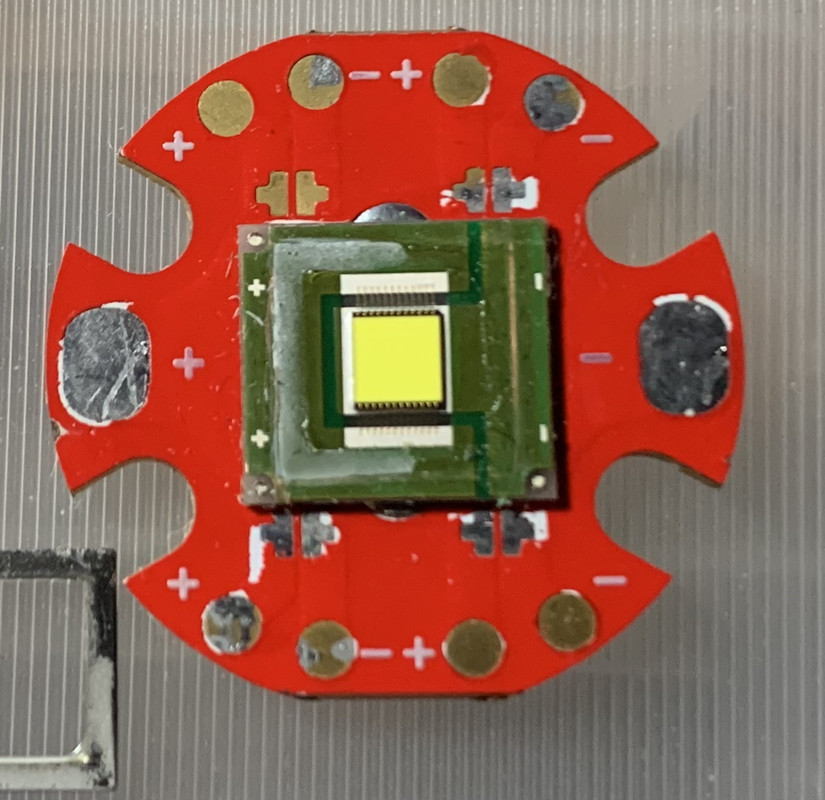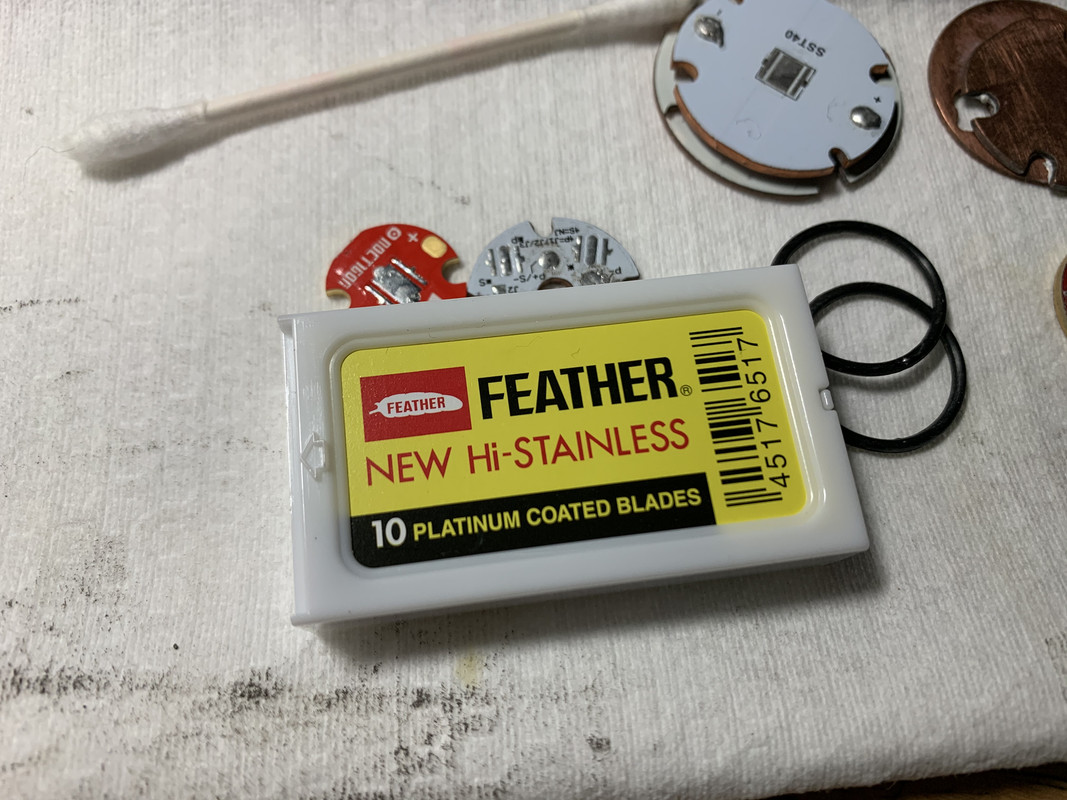
Today I received one of the scarcely available Luminus SBT-90.2 leds from nealsgadgets, and tested it for voltage and output.
It is a single die 3V led with a large die area (3x3mm) that combines high output with high luminance, which makes high output and far throwing flashlights possible. Luminus is slow with datasheets, I do not think there is one yet for the gen2 version. Edit: JaredM posted a link to the datasheet that I could not find:
GEN2 datasheet
For the test I used a 20mm diameter MT-Noctigon that is not a perfect fit but will not limit the performance of this led.

The reflow was not without problems. I started with too little solder paste so the thermal pad was not completely covered with solder and the led did not sit flat enough on the board. I removed the led, added more solder paste and reflowed again. Now all was good.
Here is the led at 1mA current, showing the very uniform luminance of the die, this led will create nice beams!

The output test was done like most of my emitter tests over the last years. I described it in detail in my XP-L test (found via my sigline), with the minor difference, that should not matter significantly for the results, that I used my Integrating sphere no. II instead of no. I.
In summary: 1) just one led of each type was tested, reflowed on a DTPcopper board 2) I used my large version II integrating sphere with high quality luxmeter, 3) the output numbers and voltages were measured with the led close to ‘steady state’ for each current, so warmed up and settled (I take a minute before each current increase), you should be able to get these numbers in a well heatsinked flashlight. Mind that these are output numbers of the bare led; in a flashlight there will be losses from light obstructions, lens and optic, 4) output is in ‘djozz-lumen’ defined as 1/550 of the output of my Sunwayman D40A on high setting, which I hope is close to the real lumen (recent comparisons show that it is actually between 7 and 11% high), but at least is consistent over all my previous emitter tests done in integrating spheres, so all my output data over the past years can be directly compared.

*again, mind that the djozz-lumen is probably somewhere between 7 and 11% high compared to the real lumen.
*this is a very high output led running at 66W at 20A, my other tests with leds with this high output suggested that the heatsinking of my rig limits the output a bit when at max. But in an actual flashlight build it will probably no different.
*at high currents, the voltage drop over the ledwires becomes significant, for the ledwires (length and type) that I always use for led-tests I measure a drop of 21mV at 10A current. So at 20A and two ledwires that is 84mV so almost 0.1V. If I was thorough, I could substract that error from the measured numbers and get you the correct voltage at the solder-joint. But I am not that thorough.
*my power supply goes up to 20A, so higher currents were not tested. As you can see in the chart, the max was not reached at 20A, but it seems also not far from max. It would be nice if someone with a PS that goes higher than 20A could test the behaviour at higher currents.
*I did keep the led at 20A for 15 minutes and it stayed rather happy at that current, the output drop over 15 minutes was about 1%. Directly after switching the led off I measured the temperature of the led with a ir-thermometer and measured 45 degC. But it would have been a bit higher because a led is not a matt black object.
Conclusion: this is a power-hungry led with at maximum power a great output (and thus great luminance given the only 9mm2 die) but at 20A not great efficiency, 72lm/W (but who cares about that ![]() ). Edit: the 175lm/W at 1A is much better.
). Edit: the 175lm/W at 1A is much better.
Stereopic:

Edit Jan26, some tint information in post#22




